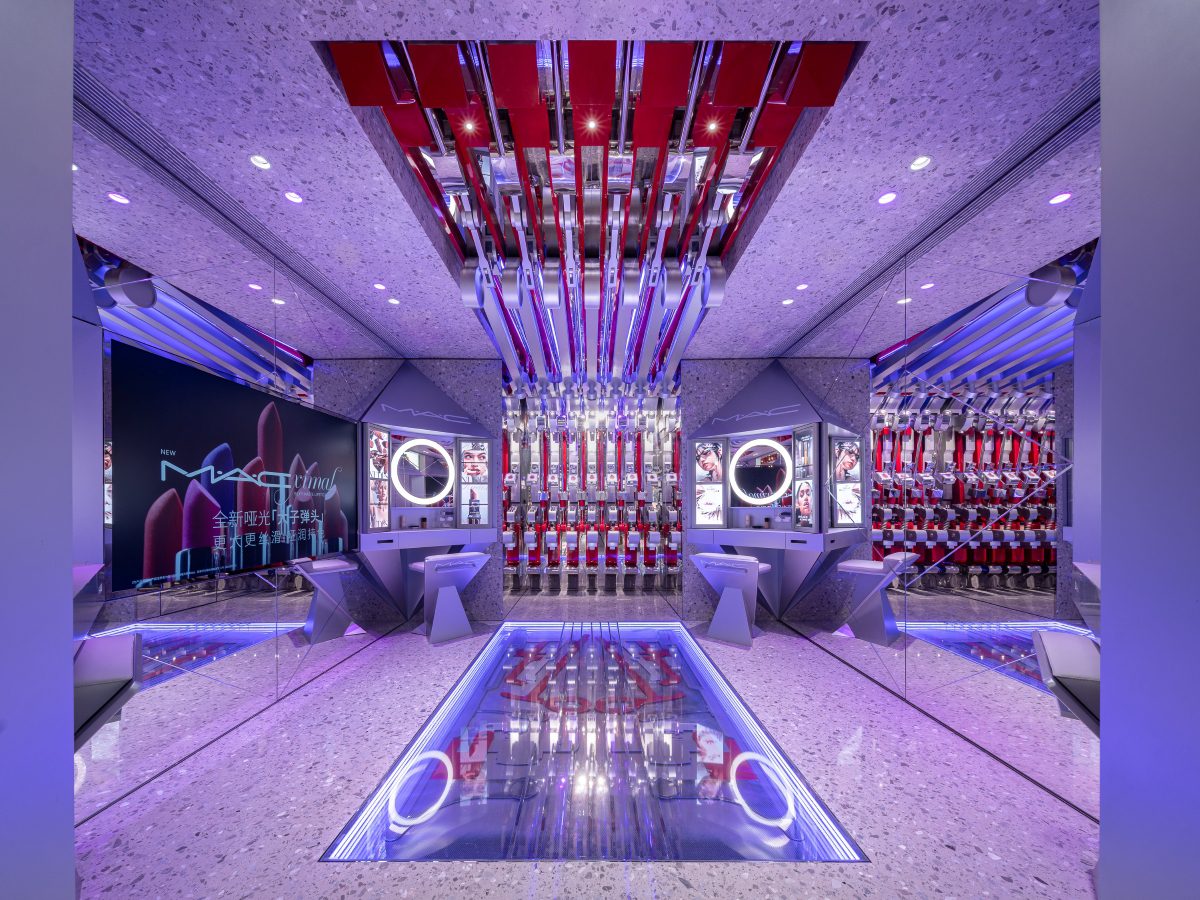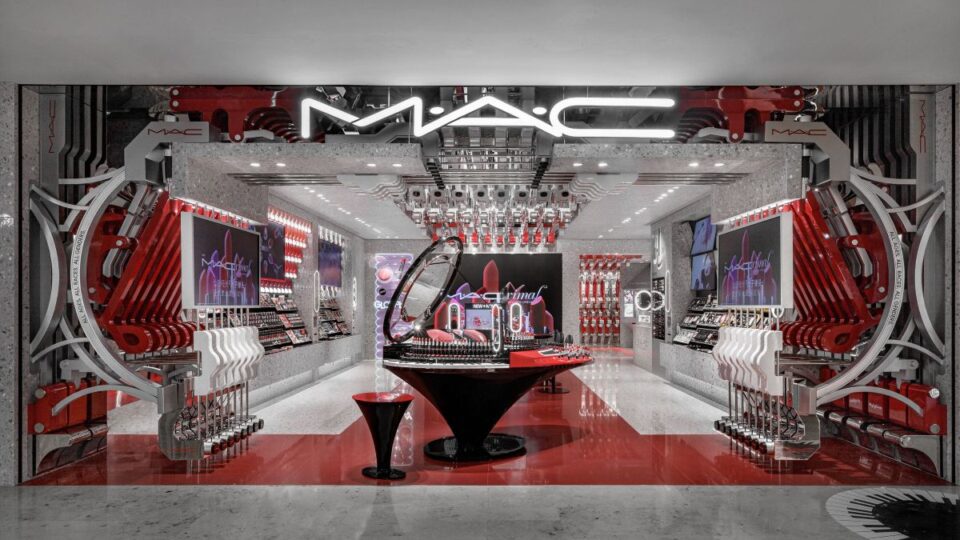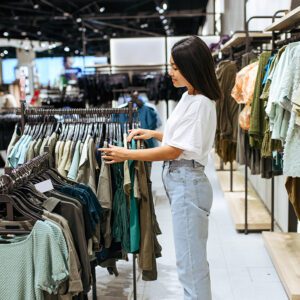Sometimes a store is just a store…and sometimes it’s a lot more. MAC Cosmetics’ newly redesigned flagship at the Deji Plaza luxury shopping center in Nanjing, China definitely falls into the latter category.
Reopened just in time to celebrate the 20th anniversary of the brand’s entrance into China, the store now features a visually stunning, futuristic design meant not just to stop shoppers in their tracks (although it will certainly do that), but also to reflect the evolution of the brand and its customers.
“With every detail, we’ve aimed to meet the next generation of consumers with experiences that blend high-performance artistry, immersive storytelling and creative freedom,” said Aïda Moudachirou-Rébois, SVP and Global General Manager at MAC Cosmetics in an interview with Retail TouchPoints.
“China is one of MAC’s largest and most influential international markets, and its impact on the global beauty industry is undeniable,” she added. “Chinese consumers are incredibly trend-savvy, expressive and digitally engaged — what resonates in China often sets the tone for what’s next in beauty. And as the market has evolved, so has MAC. We’ve embraced livestreaming, developed Asia-specific complexion shades tailored to local undertones and invested in immersive retail experiences that bring our artistry to life.”
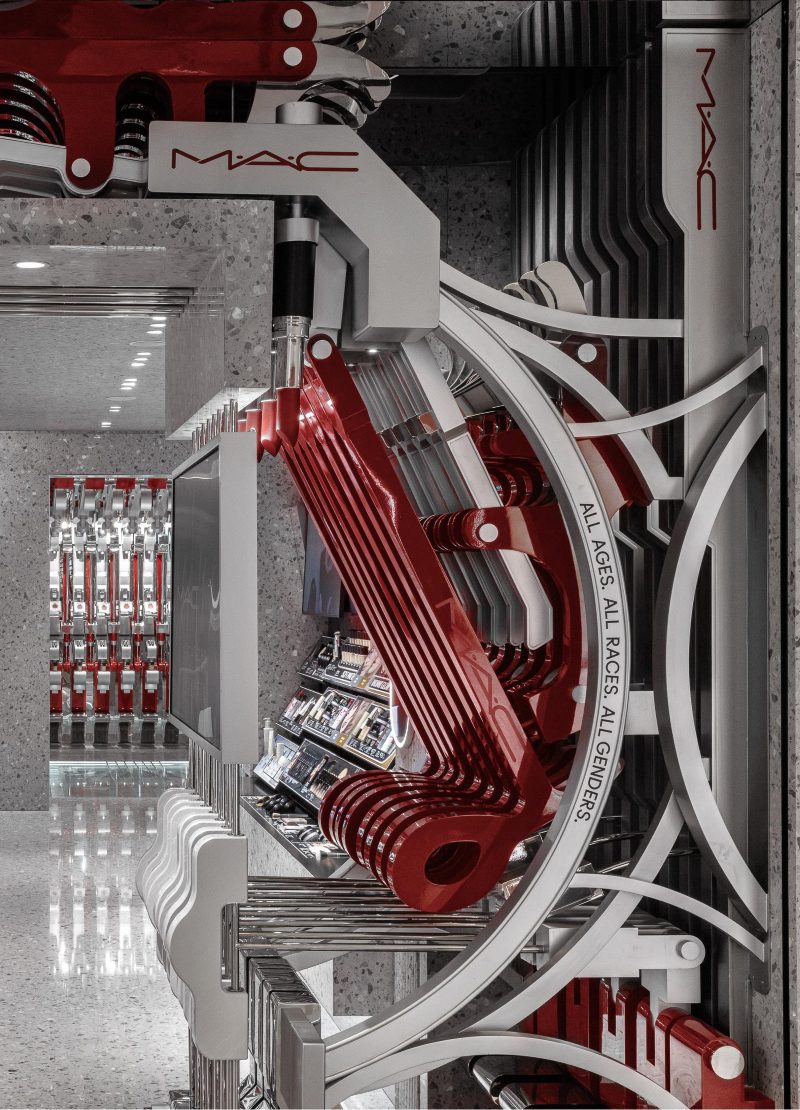
The new flagship in Nanjing is a bold example of that evolution, brought to life by celebrated Chinese architect Li Xiang and her firm X+ Living.
“A brand’s flagship store should never be just a place to sell products. Its true purpose lies in creating a tangible, physical space where people can connect with the brand — without needing words. Space itself becomes a language,” said Li in an interview with Retail TouchPoints. “MAC is a brand with intense emotional tension. It doesn’t shy away from sharpness, individuality or boldness. What I hoped to create was a spatial aura that people could immediately feel the moment they stepped inside — a presence that embodies MAC’s core: its avant-garde spirit, creative energy and unapologetic self-expression. What this store presents is not just a collection of products — it’s a statement of MAC’s vision of beauty.”
That vision is already drawing in customers and paying dividends for the brand. Foot traffic at the store more than doubled from benchmark levels during the location’s soft opening, which took place June 13-22. Not only that, but sales increased 34% and new customer acquisition was up a whopping 65%.
Moudachirou-Rébois and Li took Retail TouchPoints inside the aesthetic inspiration and strategic philosophy that led to the company’s lyrical new concept store.
A Futuristic ‘Distillation’ of the MAC Brand
Nostalgic references are the flavor du jour in many design circles, but for the MAC flagship Li said she had “no intention of following the mainstream trend toward retro sentimentality,” noting that far from being rooted in nostalgia, MAC is a brand with its eye to the future.
“To me, design is not about excessive addition, but about distillation — refining the brand’s existing visual language, product symbols and cultural meanings into an environment that feels immersive and experiential,” explained Li.
Music’s Dimensionality Provides Store Inspiration
For MAC, Li leaned into a futuristic vibe with metallic textures and mechanical deconstructions to create a store that exudes “force and cultural posture.” But to do it right, she had to find an entry point into the brand’s spirit. For Li, that ended up being a piano.
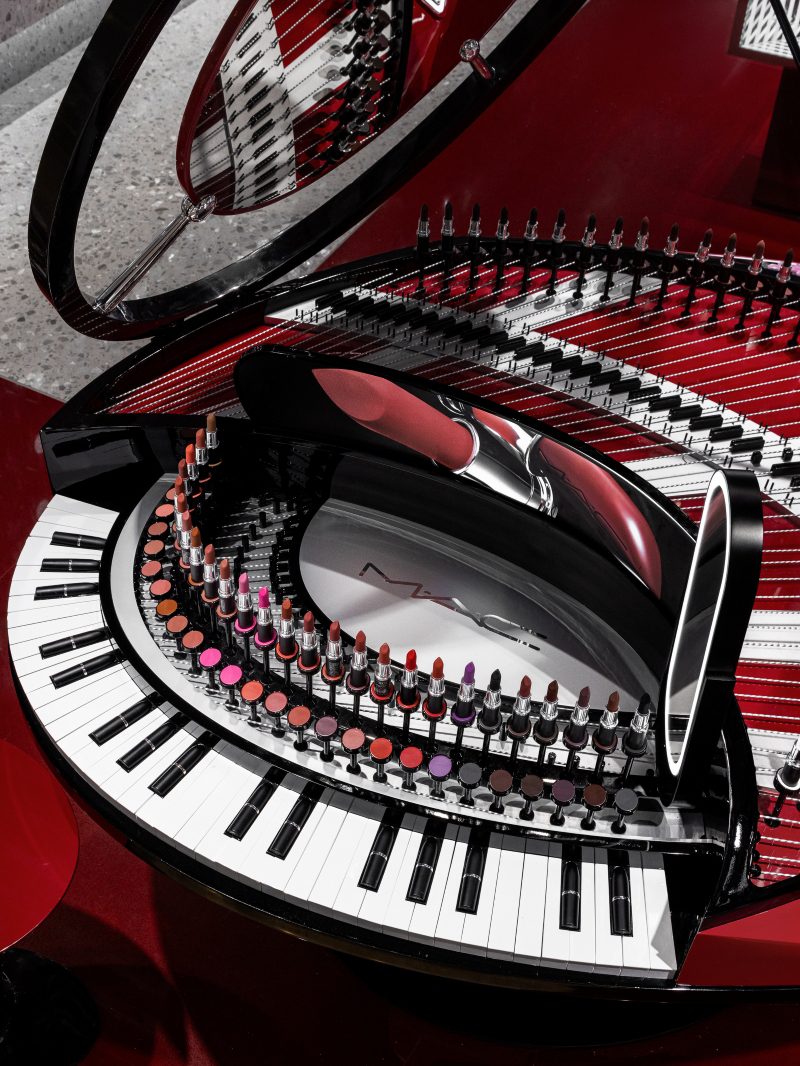
“Most art forms exist in two-dimensional space. Music is one of the few that fills and moves through three dimensions; it can’t be seen — it flows, penetrates and refuses to be confined,” explained Li. “That very nature, to me, makes music the perfect metaphor for MAC’s identity. MAC has always stood for diversity, boldness and breaking boundaries — and music carries that same tension.
“So the next challenge was, ‘How do I translate music into spatial language?’ I began with the anatomy of instruments — dissecting their structures and reinterpreting them architecturally. The piano in particular stands out: It is architecturally intricate in its inner workings, while also culturally loaded with elegance and universal recognition.”
And that is the nugget that became MAC’s Nanjing flagship. Inspired by the anatomy of a deconstructed grand piano, the space transforms MAC’s most iconic products into architectural instruments: lipsticks as black keys, palettes as tuning knobs and a sculptural ceiling that mirrors the inside of a stringed instrument.
Visitors are greeted at the entrance with an installation that interprets the form of a grand piano through MAC products, with a piano lid and body that resemble an open compact. When pressed, the piano’s black lipstick keys play real notes.
“We embraced a concept that turns the structure of a grand piano into an immersive, emotionally expressive beauty experience — one that places artistry, exploration and individuality at the center,” explained Moudachirou-Rébois. “This flagship is a love letter to the Chinese consumer — one of the most expressive, sophisticated and creatively engaged beauty communities in the world.”
An Invitation to Not Just See, but Step into the MAC Brand
This ethos continues throughout the store. While the entrance is more conceptual, as customers move deeper into the space, the design becomes more subtle, focused on experience and even laced with humor, said Li.
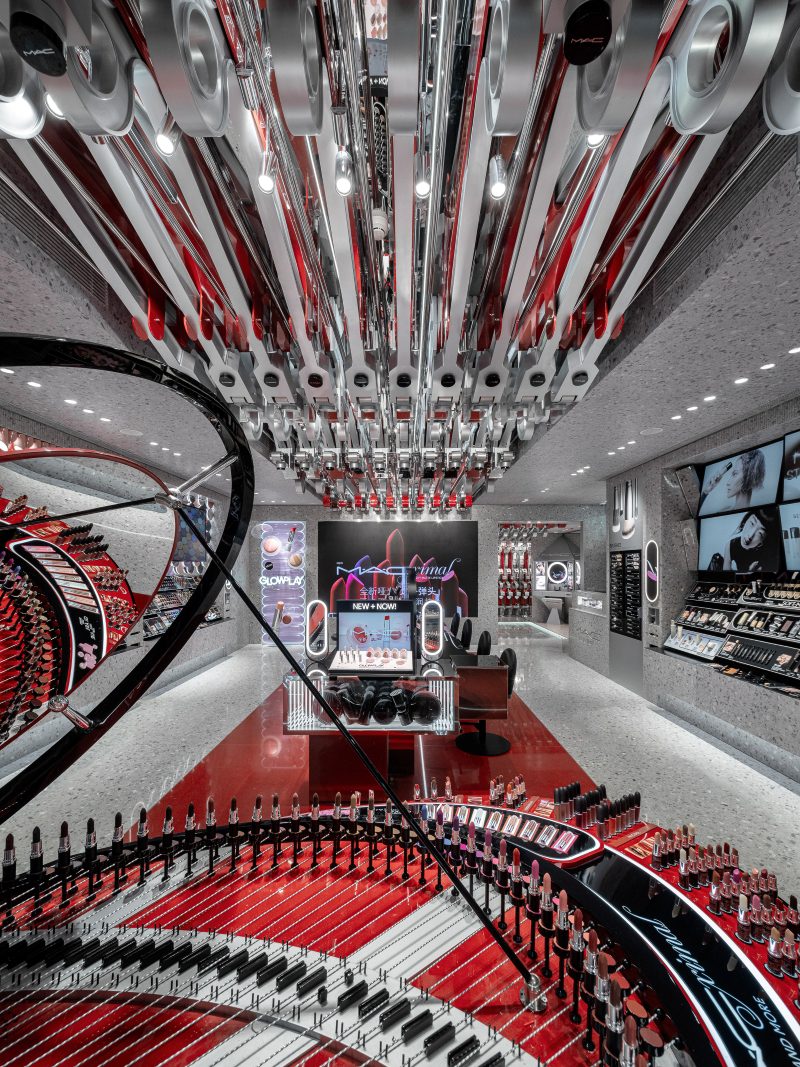
Every detail in the store is engineered for the beauty disruptor: AR-powered try-on mirrors, co-creation stations to remix looks in real time, masterclass spaces and signature services tailored to local beauty rituals.
“In an ideal commercial space, every functional element should be embedded within a unified aesthetic concept — and every artistic expression should naturally serve the act of use itself,” said Li. “[For example], the makeup area, though limited in size, achieves high flexibility through a combination of foldable makeup tables, hinged mirror cabinets and stowable chairs. This transformable structure supports a wide range of uses — from daily makeup trials to tutorials and photo shoots.”
Another example is the store’s “gifting zone,” where MAC’s classic packaging served as the inspiration for the area’s structure and aesthetic.
“I hope that in such a space, consumers not only ‘see’ MAC but also ‘step into’ MAC,” said Li.
New Series of MAC Flagships to Serve as Experience Testing Grounds
The Nanjing store is the first of several upcoming bespoke flagships that MAC is planning to introduce in key markets, each intended to “surprise and delight consumers with immersive brand experiences that reinforce our pillars of artistry, community and innovation,” said Moudachirou-Rébois.
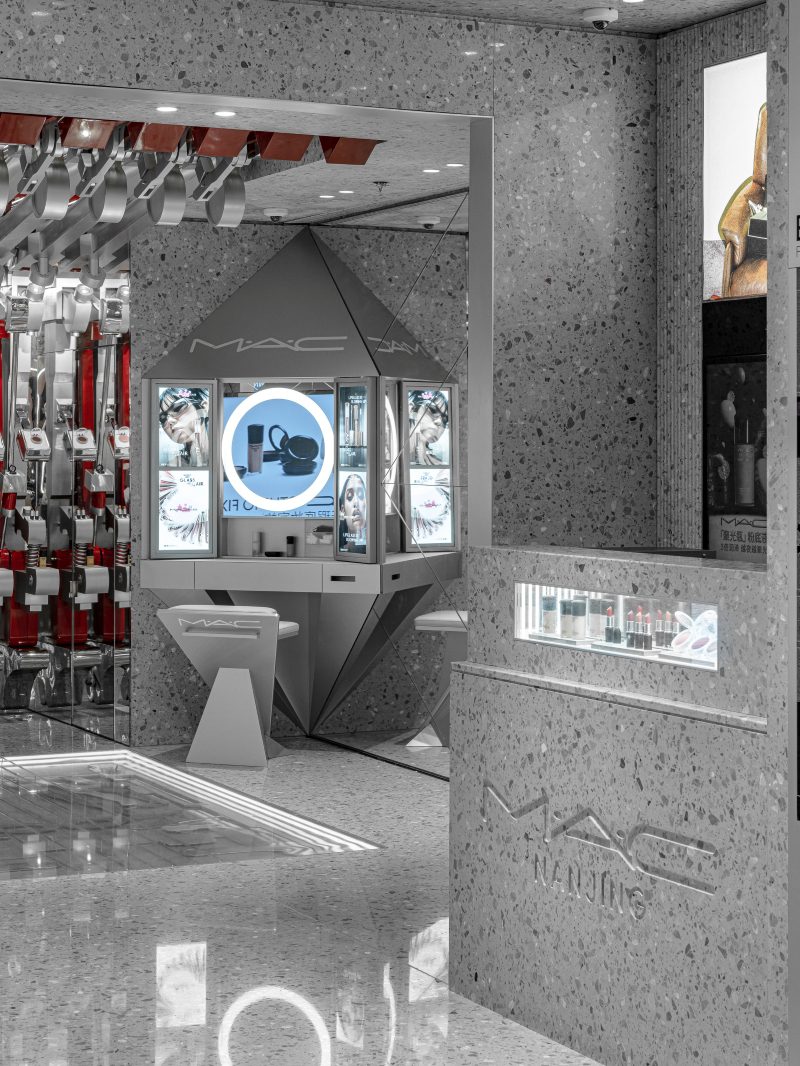
These flagships also will serve as testing grounds for ideas that the company may eventually scale across its global network. In fact, several new initiatives are being piloted at the Nanjing store, such as an enhanced gifting program that lets customers personalize products through engraving and customized packaging, with store-exclusive bags, ribbons and charms that are inspired by the specific locale.
“Looking ahead, we’re focused on deepening our cultural connection with the Chinese consumer through partnerships with locally relevant talent like Jolin Tsai, our rock-steady backstage presence at Shanghai Fashion Week and our annual Chinese New Year collections,” Moudachirou-Rébois added. “We also look forward to introducing some groundbreaking new product innovations in the months to come, all thoughtfully designed with the Chinese consumer in mind.”
And in the meantime, the company hopes that customers have a ball at the new store. “The power of beauty lies not only in being seen, but in being felt,” said Li. “Visual stimulation works through intuition, but it can provoke deep psychological responses — perhaps a sense of ease from feeling understood, an impulse to express oneself or a moment of recognition and affirmation of one’s identity. Beauty is a mechanism of awakening — it reconnects people with their own emotions.
“That’s why, when I encountered this project and the MAC brand, I felt an instinctive sense of alignment,” she added. “MAC’s advocacy of ‘beauty for everyone’ and ‘unbounded self-expression’ deeply resonates with the spirit of design itself. Neither design nor a brand like MAC is about creating a standardized image of beauty — we are both engaged in expressing an attitude, a philosophy, a right to self-identification and freedom of choice. To me, that is the true power of beauty.”
